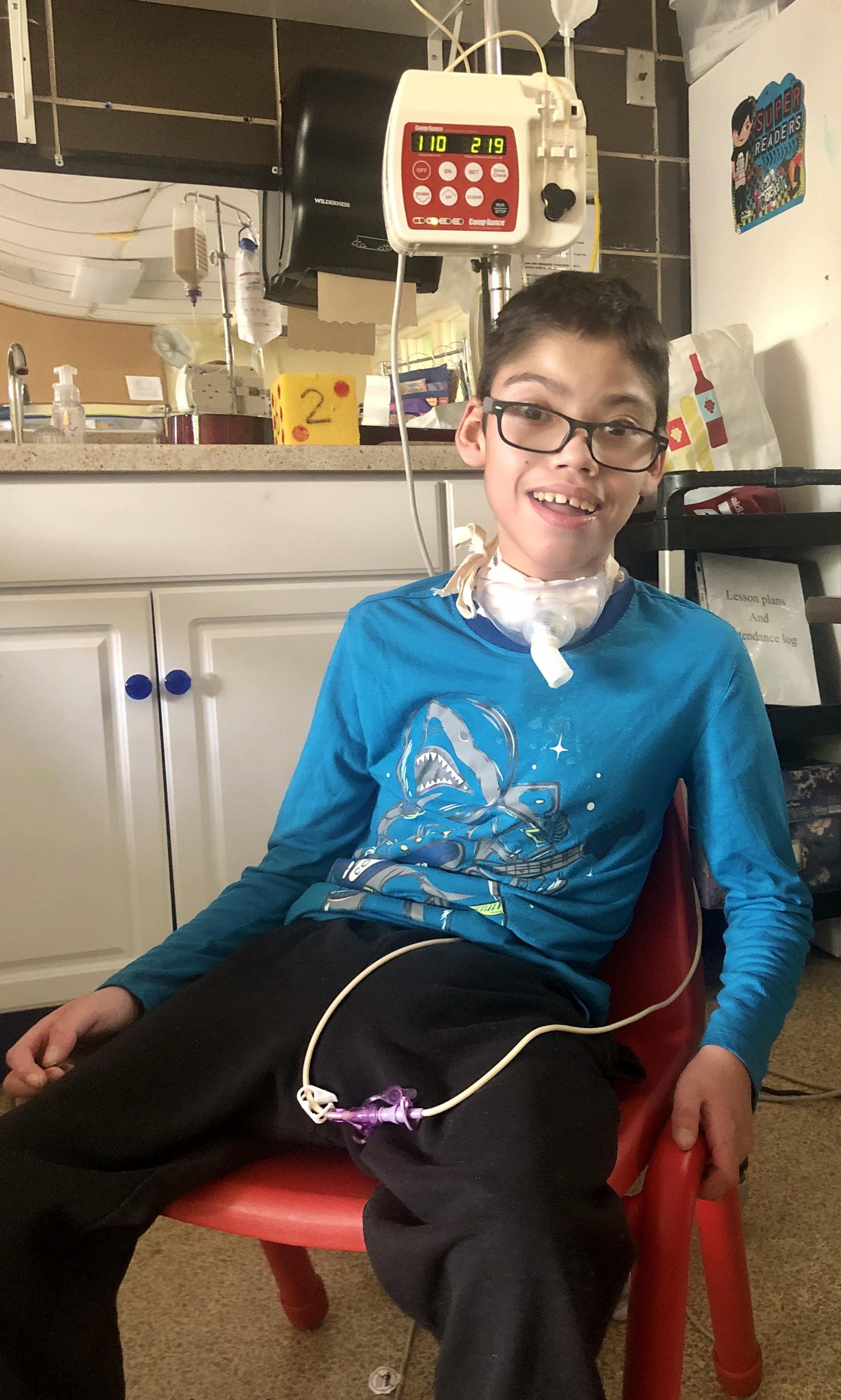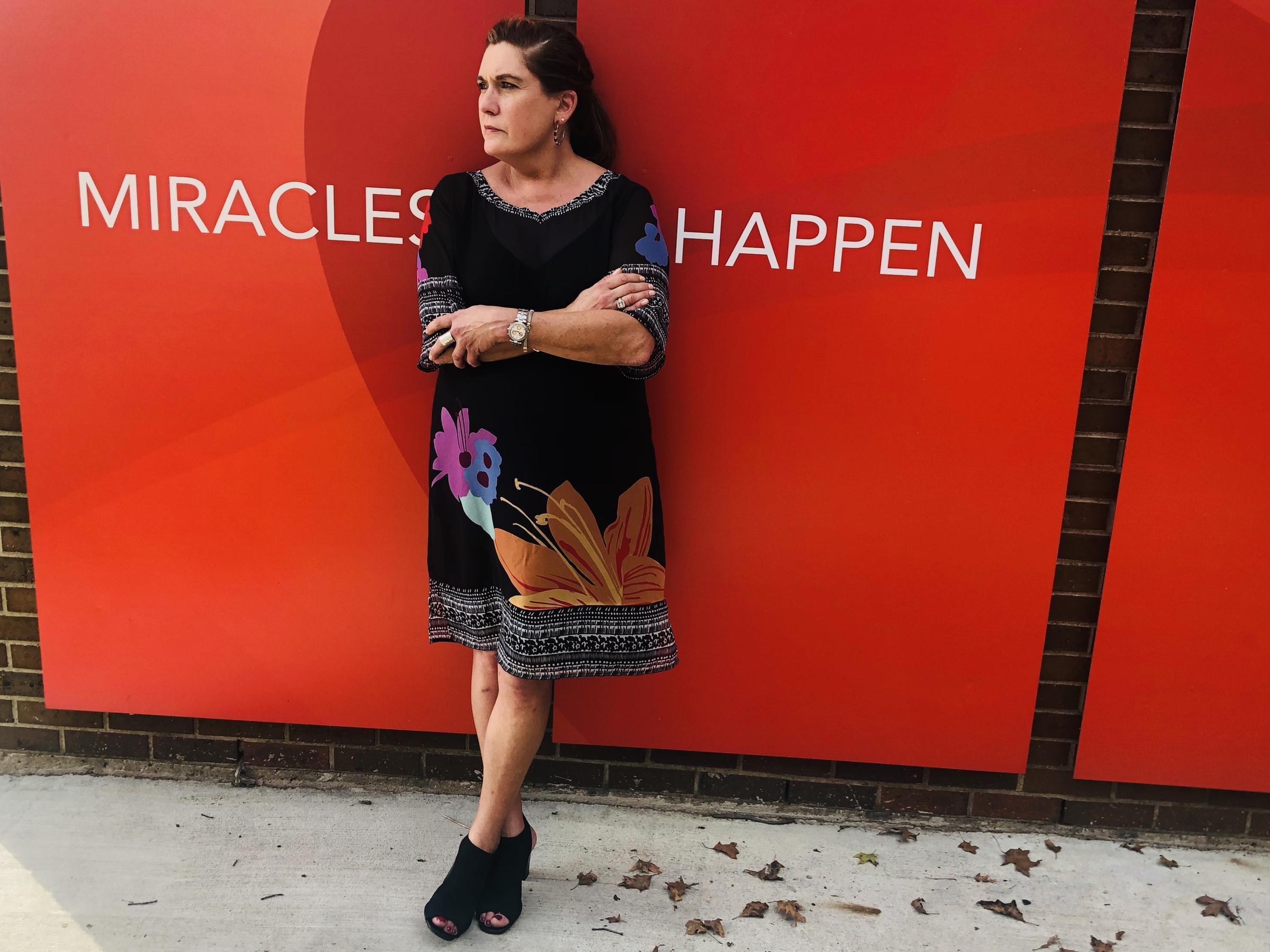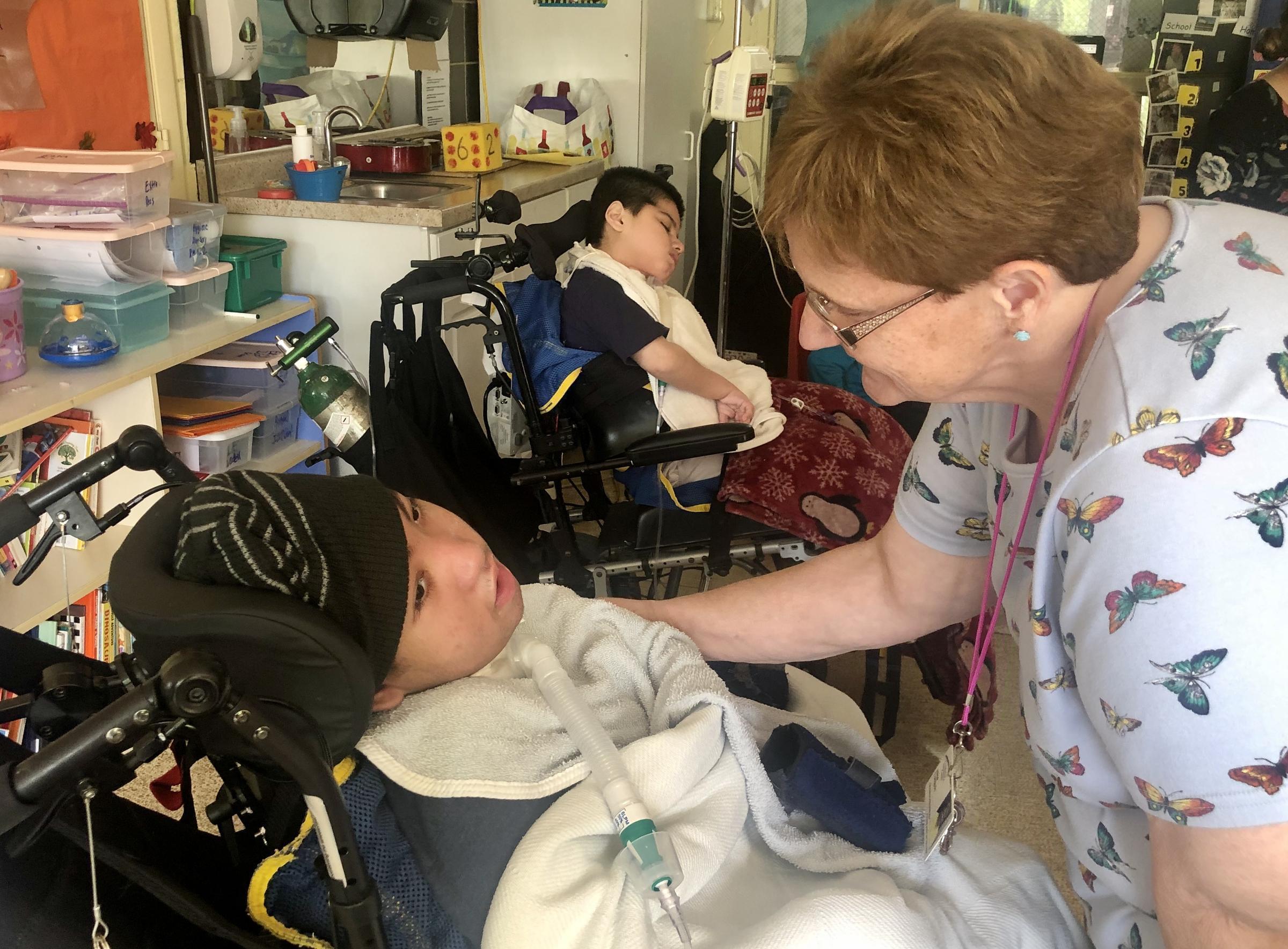Disabled, Disenrolled: Lawsuit Asks For Dollars And Decision

Carmen is learning to walk at Children's Habilitation Center. Dusty Rhodes/NPR Illinois
With most lawsuits, you can read the pleadings and decide who’s the bad guy. But in this case filed by the Children's Habilitation Center, it's hard to find one.
The plaintiff represents 10 children with disabilities, seeking almost $1 million from one of the very poorest school districts in the state — West Harvey-Dixmoor District 147.
Here’s the legal conundrum: Under federal law, every child is entitled to a “free and appropriate public education” — known among educators as a FAPE. This law applies even to children with the most profound special needs, including those who are non-verbal, medically fragile, and have severe developmental delays.
In Illinois, if these children can’t be taught in regular school, districts have to pay extra to have the students taught in private facilities. The Illinois State Board of Education (ISBE) will cover some of the tuition, but the home district has to contribute an amount equal to two times its “per cap” (a complicated calculation dividing the difference between certain district expenses and revenues by average daily attendance). That dollar amount, unique to each of Illinois’ 852 districts, ranges from a low of $5,000 to more than $29,000. In the West Harvey-Dixmoor elementary district, the per-cap amount is $10,345.

Juan, a resident of Children's Habilitation Center, can communicate by pushing a button to say yes or no.
The district is 20 miles south of Chicago in a suburb Wikipedia bluntly describes as “suffering from high levels of unemployment, poverty and crime.” Since its heyday in the late 1960s/early 1970s, Harvey has lost major employers and seen its Dixie Square Mall decay and collapse. The Children's Habilitation Center (CHC), where students in the lawsuit reside, is one of the few businesses remaining in Harvey.
In February, the school district stopped paying its portion of CHC tuition and “dis-enrolled” more than a dozen CHC residents. A few months later, District 147 agreed to re-enroll a handful of students who are in the custody of the Department of Children and Family Services. CHC’s lawsuit seeks repayment of more than $600,000 in tuition, and asks ISBE to decide who will pay going forward.
It’s hard to grasp what education for these children looks like without visiting CHC. Established more than 50 years ago, it’s basically a nursing home for kids. All 65 residents are on feeding tubes, most use wheelchairs, and a majority depend on ventilators. Some were born with profound medical issues, some sustained traumatic brain injuries, some are victims of shaken baby syndrome.
Pamela Markle, the CEO, says it’s not called a “rehabilitation” center because that term would imply residents could routinely recover from an injury.
“Habilitation is where you try to prevent further harm, further contractures. You’re never going to get back to a so-called normal state,” she says. “It is working with them to help prevent more deterioration.”

Pamela Markle is CEO of Children's Habilitation Center.
She insists that doesn’t mean their brains can’t be developed. On one visit to CHC, I was approached by a non-verbal teenager named Isaiah who touched my elbow and tried to gently nudge me down the corridor. Markle told me she has nicknamed him Einstein, because around age 7, he began sneaking into the respiratory therapy room to assemble ventilators for fun. “A Rubik’s Cube bores him,” she says.
Isaiah and five other residents leave CHC every day to attend classes in outside schools. But about 30 other school-age residents (3 to 21 years old) have the kind of complex physical needs that require quick access to medical staff. So they attend class inside CHC, where education is tailored to their developmental level.
With older kids, that might involve assistive technology, like push-buttons to indicate yes or no. But with the younger children, it can be as simple as sensory exposure — like mixing food coloring with shaving cream, digging the seeds out of a pumpkin, or putting their hands into a bin of uncooked rice.
Jane Lurquin, who has graduate degrees in special education, has been director of education at CHC for three years. She says testing puts most of these non-verbal kids at the developmental level of infants. So she focuses on incremental signs of progress.
”I have one that, he never moved; now when you say his name, he lifts his head up and looks for you. There’s another one that, she’s now starting to hold my finger a little, but she also learned how to turn her monitor on and beep when I leave, and turn it off when I come back,” Lurquin says. “We’ve had a couple that actually moved out, because they have progressed enough to move back with family. And those ones we kind of miss all the time.”
Those tests, she says, are tricky for children who can’t talk, and can’t even use their hands or feet to make gestures due to contractures. She and her staff look for more subtle responses, like blinks, eye movements, or facial expressions. Those responses, Lurquin says, will vary depending on the child’s relationship with the other person.

Jane Lurquin, the director of education at Children's Habilitation Center, talks to Ledell.
“We give them extra time for responsing,” she says. “We expect a response, and we wait for it. The more you expect from them, the more you see.”
She wrote her doctoral dissertation on severely disabled children — a population she says is “the least educated, the least researched, the least represented, but the most in need of services, and those are the ones that get left out.”
But the Harvey school district’s recent decision to “dis-enroll” CHC students doesn’t necessarily reflect an effort to leave them out. The district’s attorney, William Gleason, acknowledges these students definitely deserve FAPE.
The district made this decision soon after appointing a new superintendent, Johnetta Miller, who examined the budget looking for ways to save money.
“Mrs. Miller, within her fiduciary responsibilities for the Board of Education, observed the amount of money that was being spent to CHC,” Gleason says. “And she did raise concerns of ‘There’s several hundred thousand dollars going out, is this money that we should be spending?’”
You can’t blame her for trying to save money. According to ISBE’s evidence-based funding formula, West Harve-Dixmoor District 147 last year had just 62 percent of the funds it needed to meet basic adequacy. That’s despite an increase in state dollars courtesy of the new funding formula, and a painfully high property tax rate. Harvey homeowners pay a whopping 6.5 percent, which means whoever buys the modest, 65-year-old two-bedroom house listed on realtor.com for under $35,000 will face a total assesment of $2,599 (this house was one of the few Harvey homes not listed as a foreclosure).

Carmen laughs when her teacher kisses her cheek.
There’s a limit to how much sympathy Markle, the CEO awaiting a ruling on unpaid tuition, has for the school district’s budget woes. She says the district appealed CHC’s tax rate, and got it increased by 71 percent last year.
The lawsuit she’s filed hinges on where the parents live, and getting them to enroll their children in those districts, to make them pay the tuition. That’s easier said than done, she says.
“Most of our clientele... the parents are in poverty. They have issues of their own. We only have about 10 children that have parents involved,” Markle says. “We really are their family.”
The State Board of Education is expected to issue a decision this week. Meanwhile, CHC is continuing to educate all school-age residents.

